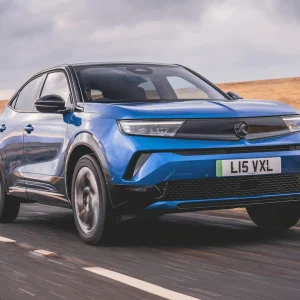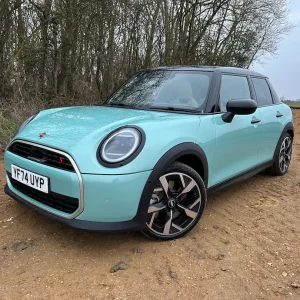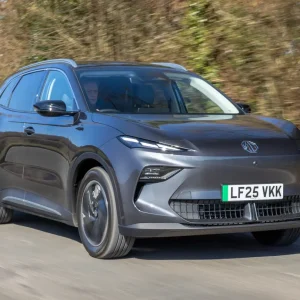“Oi, is that one of them cars that’s driven by water?”
Having stopped at some traffic lights with the window open next to the adjacent van, I ponder my answer. The driver is eager for a reply.
“Not exactly,” I respond. “It’s a hydrogen fuel cell.”
“Nice and cheap to run then,” he tells me.
Happily, the lights turn green and I don’t need to elaborate.
A more precise answer to his question would be that the Toyota Mirai is a fuel cell vehicle that generates electricity by mixing hydrogen with oxygen, which in turn is stored in a battery and thus powers the car, emitting just water from its tailpipe.
With me so far?
Despite having been on sale since 2015, the Mirai remains something of a novelty for most of the UK public – not surprising really when only around 3,000 have been sold globally.
The technology provides an alternative to the more conventional EV, and in a lot of ways, is a much more convenient choice, offering a longer range and a quicker refuelling time (around five minutes from empty), but on the flipside there’s a distinct absence of infrastructure with only nine hydrogen refuelling stations here in the UK, and the car is very expensive to buy outright.

The Toyota Mirai is not the first car to showcase hydrogen technology – the Hyundai ix35 came (and has now seemingly gone) before it – but it is the first to be produced solely as a hydrogen-powered vehicle from the outset.
Aimed very much for business users, the four-seater saloon rivals conventional models like the Kia Optima and Volkswagen Passat on size, although neither offers hydrogen as a method of propulsion.
It’s certainly more striking to look at too, but whether or not that is a good thing is up for debate, of course. Personally, I like the design, but it won’t be to everyone’s taste.
The electric motor generates 153hp and 335Nm of torque, which translates to a 0-62mph time of 9.6 seconds. The immediate torque means the car feels swift off the line, but the extra weight of the fuel cell and hydrogen tanks make the vehicle feel heavy, especially in the corners.
On the road the Mirai is easy to drive, comfortable on the motorway thanks to its excellent ride, and, although there’s a strange whine from the motor that’s a notch louder than your average EV, it’s not as noisy as a typical petrol or diesel engine.
There are two different driving modes: Eco and Power. Opt for the latter to get the best of the Mirai’s performance and a sharper throttle response, although, like EVs, that’ll come at the expense of the car’s range.

Inside is spacious and the interior, for the most part, feels plush and built to last. Practical features are in abundance too, and standard heated seats for all passengers are a nice luxury to have. Boot space has been sacrificed to house the two hydrogen tanks, and has been reduced down to an admittedly still usable 361 litres.
For the driver there’s a futuristic touchpad control from which you can manage the climate controls, among other things, a touchscreen infotainment system and a double-storey dashboard, which incorporates twin information displays. The resolution and quality aren’t the best, but it’s easy to navigate around. There’s also loads of standard kit, which helps a little to soften the shock of its £66,000 price.
Only having nine refuelling stations around the UK is a big problem for the Mirai at present. That figure will undoubtedly grow over time though, and to fill the car with hydrogen is easy, only taking a couple of extra minutes over a 2.0-litre petrol or diesel.

It is expensive, though. The Shell station we visited cost £9.99 per kg of hydrogen and the car roughly holds up to 5kg, meaning each 342 miles (the Mirai’s official range) will cost £50. That said, these prices will inevitably go down as demand and uptake increases.
Toyota’s revolutionary saloon continues to generate intrigue with the UK public and breaks technological protocol in more ways than one. It’s a pioneering effort from the Japanese carmaker, and has paved the way for other manufacturers to follow.
Would we consider one as a company car? The simple answer is not yet.
Yes, it is expensive for now, but hydrogen has many advantages over other alternatively fuelled vehicles. Give it time and investment and the Mirai may soon become a regular sight in the company car park.
Toyota Mirai |
| P11D £66,000 |
| On sale October 2015 |
| Range 342 miles |
| CO2 (BIK band) 0g/km (9%) |
| BIK 20/40% per month £99/£198 |
| Boot space (min/max) 361 litres |
| Engine size/power 113kW battery/153hp |





